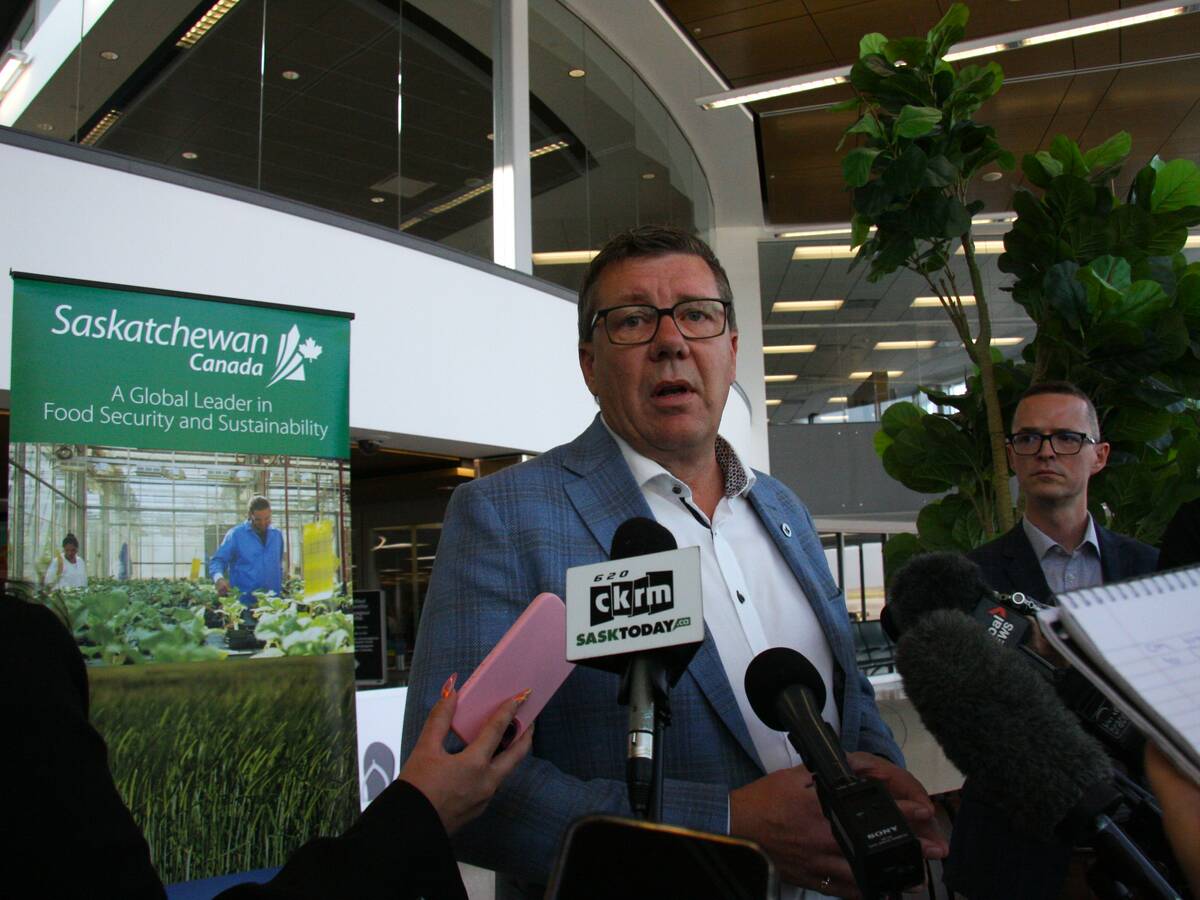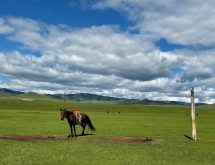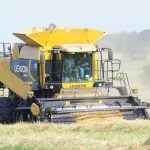OSLER, Sask. – Joe Guenther has been in the dairy business a long time. He remembers the industry before supply management. He also remembers the introduction of quotas, the birth of quota values and the advent of record high quota prices.
Guenther is also helping the next generation enter the business. His son Chad is building a home on the farm north of Saskatoon and is becoming a partner in the family business.
The move will mean expanding the family’s milking herd to 100 cows from around 60 or so. At today’s quota prices in Saskatchewan, buying the right to produce that much additional milk will cost more than $800,000, not including the cost of new cows, a new barn and additional equipment.
Read Also

Moe says China trip laid ground work
Saskatchewan premier says signals of moving forward on canola tariffs can be seen in moves from Chinese and Canadian governments
Guenther, 57, figures it is a good investment.
“I’ll have to amortize it over a long period of time, that’s the only way I can do it,” he said on a Saturday morning after milking.
“But I think it is a good investment. It is a good industry.”
Guenther’s choice is one that dairy farmers across the country face almost every day.
Quota values are at record highs, meaning producers must pay a huge price to enter the industry.
But with supply management tariffs under attack at World Trade Organization talks, there are some who wonder if buying into the business is really a sound investment.
Most analysts say yes.
“Quotas have this value because they give you entry to an industry with guaranteed profits,” said George Morris Centre economist Al Mussell.
“It is a franchise fee,” added former federal agriculture minister John Wise, who sold his quota in 1972 when he was elected to Parliament.
“It is an essential part of a very stable system.”
According to Wise, investing in quota is preferable to investing in tractors or farm equipment.
“Its value has staying power,” said Wise during a recent lunch meeting with Talbotville, Ont., dairy farmers Nick Doelman and John Lyle.
Doelman agreed but he had a caveat.
“If we can afford to pay $27,000 (per cow) to get into the business, it creates an image problem,” Doelman said.
Quota value – the price of being allowed to produce milk inside a regulated system – is indeed an image problem for the multibillion-dollar dairy industry.
During the past year in most provinces, quota prices have increased by 10 percent or more to historic highs.
In Nova Scotia, the average cost of buying quota costs the equivalent of $31,600 per cow. By comparison, the right to produce milk costs the equivalent of $29,400 per cow in New Brunswick, more than $18,000 in Manitoba, $21,000 in Saskatchewan, $24,000 in Alberta and $22,000 in British Columbia, one of the few provinces that saw a rare decline in quota values during the past year.
Critics like Honey Forbes of the Consumers Association of Canada, a Vancouver Island coroner who sits on the national dairy milk supply management committee, see growing quota values as an indication that milk prices are too high.
Dairy farmers are not allowed to claim quota purchases in their cost-of-production formula so must pay for their quota allocations out of farm profits.
“The optics are that there is excess profit in the milk pricing system if they are able to pay that much to get into the business,” Forbes said. “Surely this competition to get in is a sign of too much money to be made.”
Young farmers who must invest $1 million or more just for the right to produce milk say quota value is a barrier that stifles new producers and favours certain groups such as the children of established dairy farmers or Europeans who sold high-priced land abroad and can afford the hefty price tag.
Critics also note that when quota began, it was distributed free, based on historic production patterns. Even today, when the market expands and new quota is issued, it is distributed free but instantly acquires value.
For the original farmers in the system or those who acquire a piece of an expanding market, quota value is an asset gift.
To farmers wanting in and those without access to free quota, it is an unfair barrier that limits participation in the industry.
John Core, a former Wyoming, Ont., dairy farmer who is chair of the Canadian Dairy Commission and a strong defender of the quota system, recalls the early days of quotas in Ontario.
“Eventually it just reached the point that quota had value and not everyone had access.”
Core said quota costs are an inevitable reflection of the stability of the dairy industry. “From a dairy farmer perspective, it is a cost you have to take into account and you have to be sure it is worth it.”
Politicians, financiers and industry leaders defend quota value as inevitable and a sign the sector is healthy.
“If you want to get into the dairy business, there is a considerable cost but with the supply management system, once they do make that investment, they know what the returns are going to be,” said federal agriculture minister Lyle Vanclief.
“Any business that has stability, whether in agriculture or any other sector, certainly has a cost attached to getting into it that may not be just bricks and mortar.”
Gary Stewart, senior vice-president of lending for Farm Credit Canada in Regina, said borrowing to buy quota is a good investment, as long as the term is not longer than 10 years.
“We very much like to do dairy loans because they are a stable sector and our arrears with them is the lowest.”
Last year, FCC loaned $762 million to dairy farmers. About $242 million of that was used to buy quota.
Stewart said a repayment schedule longer than 10 years increases the risk of negative policy changes. In fact, some banks now are lending for 15-year terms or more, a move that dairy industry leaders worry will boost quota values further.
Dairy Farmers of Canada executive secretary Richard Doyle defends the quota system as an efficient way to manage the business.
“Quotas make dairy transfer transparent,” he said.
“They are a cost and exclude some people but they also allow expansion and transfer among those who are serious about the business.”
Former Manitoba New Democratic Party agriculture minister Bill Uruski remembers how he “agonized” over supply management quotas, wondering how they would affect new entrants and farm debt levels in the 1980s.
He tried various ways to keep quota value out of the system, including attaching quota to land and to animals. In the end, nothing worked.
“There is no doubt that quota prices keep people out of the industry and add debt to those who are expanding,” Uruski said.
“It always is a concern until the farmer holding it is retiring and then the concern evaporates.”














